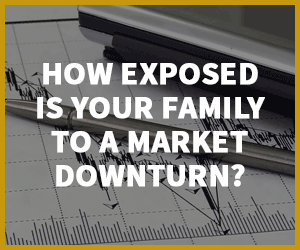Blog
Silver Investment – Ideal in Balancing a Financial Portfolio
Putting together an investment strategy isn’t easy. A shrewd investment strategy requires astute asset allocation that keeps your financial goals in line with your risk tolerance. A smart investment strategy is not about timing the markets and moving from one asset class to another in order to maximise your gain.
Important considerations prior to asset allocation
There are two important aspects to understand:
- The first one is that you cannot win every time. There are boom and bust cycles in every market and you must ride them. In order to do that, a long-term view is essential. A long-term view is typically more than 10 years, during which time, your portfolio will have matured having gone through these cycles.
- The second one is that your asset allocation can only be done in line with your risk appetite. In that sense, this step is unique for every individual. Each person’s risk appetite depends on that person’s income, age, family situation, the number of dependents, ownership of property, debts owed, assets owned, etc. It’s pretty much like a balance sheet of that person’s life. Making money is about taking more risks to gain more. Therefore, an aggressive asset allocation that includes volatile asset classes is great for someone who is younger, earns well and has the propensity to take more risk. However, a middle-aged man who may retire within the next five years is risk-averse and may require a more conservative approach, in terms of his asset allocation.


A diverse approach
The old maxim, ‘Don’t put all your eggs in one basket’ holds true in this case. A diversified approach taken by the investment advisor will typically include a number of asset classes that may include real estate, stocks, bonds, equity growth schemes, fixed income products, cash deposits, ISAs and of course precious metals. The premise here is that investments across a range of asset classes will lead to stability in the event a particular asset class underperforms. Performance is monitored closely and money moved from one asset class to another depending on market conditions. Diversification protects the investor against unexpected market shocks. Rebalancing, on the other hand, is all about risk assessment and ensuring that overexposure to areas of risks is avoided.
How would exposed are you to a market downturn? Take our FREE test to find out here
What is balancing a portfolio?
Let us suppose you started your portfolio with a traditional asset allocation of 60-40 across equities and bonds. At the end of three years, you find stocks have outperformed. Now, your portfolio has grown, but you may have too much in equities due to a boom in capital markets. Then, you need to book profits and re-allocate, so that once again the 60-40 ratio can be maintained.
Rebalancing is not about reacting to short-term market conditions. When events like Brexit hit the market, don’t panic and start selling off a particular asset class in order to re-adjust. Patience is required to stick to the plan and reap rewards in time. Rebalancing should be done every year or two.
Another factor that needs to be considered when rebalancing is changes in a person’s personal circumstances that impacts the risk appetite. A person may get older and this would affect the risk appetite. A person could also lose his/her job. All these changes in personal circumstances need to be taken into consideration.


The role of silver in balancing
The role of precious metals like silver in an investment portfolio
serves more than one purpose. The first one is hedging. Hedging is a strategy that offsets risks associated with investments, more importantly, future risks. So, if the portfolio is overweight by 10% in equities and we move that 10% to silver, we have not only balanced the portfolio but also hedged against future risk of losses that we may have incurred by remaining invested in stocks and bonds. We need to bear in mind that our portfolio is also impacted by the forces of inflation, which means that the real value of the money we make today will be a lot lower in 20 years. By investing in silver we also hedge effectively against inflation. Many investment experts agree that 7-15% is a healthy allocation for precious metals in any portfolio. At the silver price per troy ounce at $16.58, it’s an affordable addition to your portfolio.
To know more about silver investing, call us
If you have any questions about how much silver to include in your portfolio, talk to our experts. Our team of investment experts are just the right people to guide you on investing in silver and other precious metals. Call us on 020 7060 9992 or send us an email and an investment advisor will get back to you.
Image credits: Wikimedia Commons and CCO Public Domain



